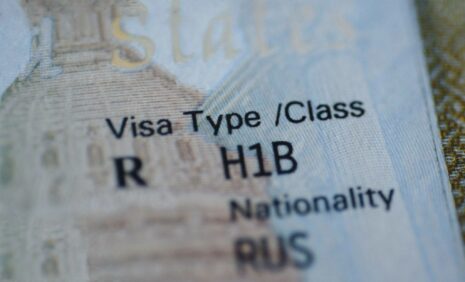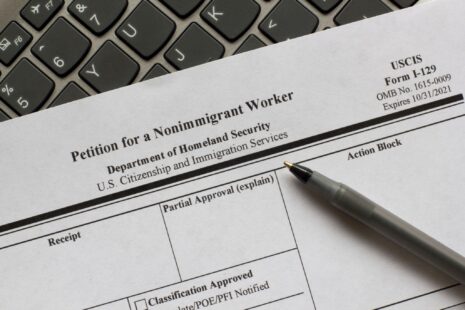Employer Best Practices for the FY2026 H-1B Lottery
At Zulkie Partners, we are committed to helping our clients navigate the increasingly complex landscape of U.S. immigration policy. To this end, we’ve compiled a list of recommended best practices for employers to refer to as they prepare for this year’s H-1B lottery.
Please refer to our blog post here if you need a more comprehensive overview of the H-1B lottery process, including key definitions and a breakdown of the lottery system.

Partial image of H-1B visa stamp in passport – © Evgenia Parajanian / Adobe Stock
Identify potential candidates early
Begin by assessing your current workforce and future hiring needs to identify non-U.S. citizen employees or candidates who may require H-1B sponsorship. Early identification allows ample time for thorough preparation.
Stay informed about registration dates
The H-1B registration period typically opens in March. For FY 2026, it’s anticipated to commence in March 2025. Actively monitoring official announcements from USCIS helps to ensure timely participation.
While specific dates can vary annually, the general timeline is:
- Mid- to Late-February: Companies can create their USCIS accounts.
- Early March: Registration period opens.
- Mid-March: Registration period closes.
- Late March: Lottery is conducted, and selected applicants are notified.
- Early April: Petitions can be filed with USCIS.
If insufficient petitions are received, USCIS may conduct a second lottery in July, with filings beginning in August.

Laptop keyboard partially covered by an immigration form – © Tada Images / Adobe Stock
Prepare necessary documentation
Gather all required information for both the employer and prospective employees, including (but not limited to):
- Employer Details:
- Legal name.
- Doing business as (DBA) name.
- Employer Identification Number (EIN).
- Mailing address.
- Authorized signatory’s full name, title, email address, and phone number.
- Employee Details:
- Full legal name.
- Gender.
- Date and country of birth.
- Valid passport number.
- Educational qualifications.
Ensuring the accuracy of this information is crucial for successful registration, as errors can lead to processing delays and even petition denial.
Be aware of increased registration fees
USCIS has announced an increase in the H-1B registration fee from $10 to $215 per beneficiary for FY 2026. Employers should review and update their budgets accordingly to accommodate this change.
Consider alternative visa options
Given the competitive nature of the H-1B lottery, it’s prudent for employers to explore alternative visa categories to ensure workforce continuity if their petitions are not selected. Please refer to our blog post here for a more detailed breakdown of H-1B visa alternatives, including L-1, O-1, TN, and E-3 visas.
Monitor potential policy changes
Stay updated on any proposed changes to the H-1B program, as policy adjustments can impact eligibility and application procedures. Regularly consult official USCIS communications and do not hesitate to seek guidance from a qualified immigration attorney.
By implementing these best practices, employers can better navigate the FY2026 H-1B lottery process and improve the likelihood of securing approvals for their valued employees.